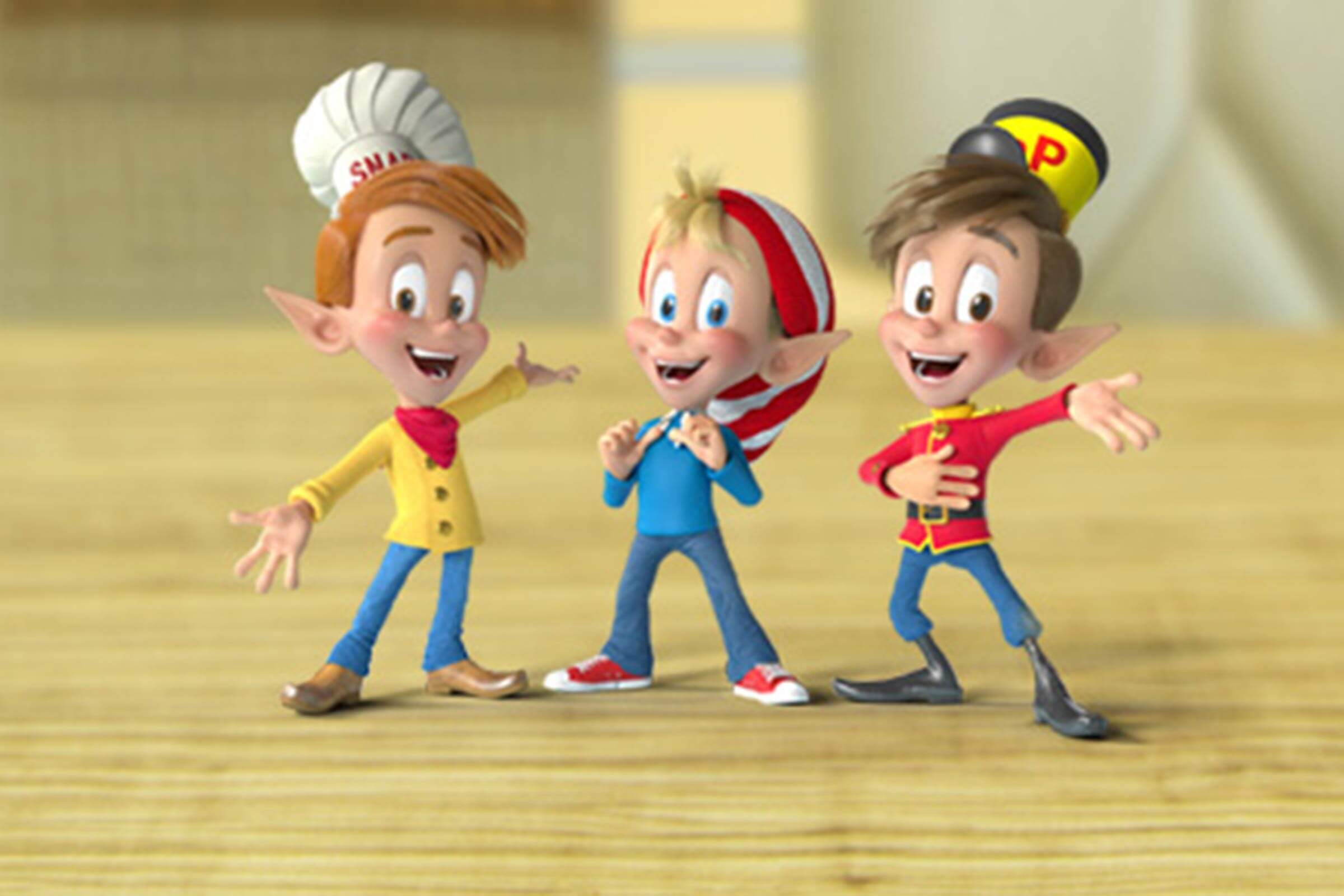Snap Crackle And Pop
37 hours.
37 hours, the approximate amount of time I have spent blankly staring at this word document, struggling to get going on a paper regarding the ongoing and complex narrative which surrounds a phenomena commonly referred to as “cancel culture”.
37 hours, not because I hadn’t already a grasp on what cancel culture is (anyone with an internet connection, a Twitter account, or whose simply been alive for the last five or so years has most certainly been made aware of cancel culture, begrudgingly or not).
Rather, 37 hours because the more I read and browsed the myriad of articles written recently that surround cancel culture, the more I found myself second-guessing and questioning where my personal position truly lands on the topic.
Then on the cusp of the 38th hour, I had my “ah ha” moment. After reading countless articles, opinion pieces, and even academic journals that all seemed to argue staunchly for or against cancel culture, I realized that these pieces were all very black or white arguments for a much more complex, “grey-zone” issue. The militant “for” or “against” arguments surrounding cancel culture tend to be heavily politicized and concern themselves mainly with the ongoing debate surrounding free speech and/or censorship versus accountability, particularly with regard to public figures and large corporations.
Jun 03, 2020 On this page you will find the solution to Snap crackle and pop crossword clue crossword clue. This clue was last seen on June 3 2020 on New York Times’s Crossword. If you have any other question or need extra help, please feel free to contact us or use the search box/calendar for any clue. Snap crackle and pop crossword clue.
- Snap Crackle And Pip. Stained glass pieces in various sizes, from small hearts to larger panels. All handmade by me.
- The Snap, Crackle and Pop. Musings of a single mother, sometimes lover, unofficial commentator of popular culture and other random things.
- Feb 13, 2017 Crepitus neck is the crunching, grinding, or popping sound produced when you move your neck. These sounds are indicative of the presence of air trapped in the joints or subcutaneous tissue.
- Crepitus neck is the crunching, grinding, or popping sound produced when you move your neck. These sounds are indicative of the presence of air trapped in the joints or subcutaneous tissue.

For me, my epiphany moment came when I recognized that the current dialogue surrounding cancel culture has failed to resonate strongly on one side or the other largely because I find myself occupying that middle, grey-zone, No-Man’s Land of indecision.
To be clear, there are instances wherein cancel culture and its mechanism is undoubtedly justified. Instances such as the case surrounding disgraced motion picture mogul Harvey Weinstein and the many others who have been exposed thanks to the #MeToo movement and brave voices of their survivors are all examples of clear and warranted “cancellation”.
Additionally, in the case of the above mentioned; the offenders’ behaviour was largely an ongoing pattern of behaviour and abuse that was allowed to not only exist, but flourish for decades due to a larger, institutional umbrella and culture of silence which protected them. Unfortunately, these stories of exploitation and abuse by those who wield such power are not rare.
But for all of the chatter surrounding cancel culture and its importance in amplifying marginalized voices and a move towards accountability and progress, how efficient is it in terms of promoting change at the institutional level?
In Ligaya Mishan’s New York Times article titled “The Long and Tortured History of Cancel Culture”, Mishan explores mankind’s history of using public shaming as a means of punishment, atonement, and as a cautionary tale for those who dare to go against the established social mores of their society. Cancel culture for some is catharsis, a brief and fleeting moment in time when regular people get to witness the very public demise of someone who otherwise wields seemingly unfettered power and privilege. There is something extremely visceral in witnessing a larger-than-life public figure experience scandal or a stain on their otherwise impeccable and polished front-stage persona. These instances of schaedenfreude that surround these figures humanize them and remind us that we are all more or less the same and that on a very basic and human level, we are all capable of transgressions, regardless of our level of privilege and economic or social capital.
But despite the social function of cancel culture and the fear that it is meant to evoke, is it working? Mishan writes, “…for all the fear that cancel culture elicits, it hasn’t succeeded in toppling any major figures— high level politicians, corporate titans— let alone institutions. Those most vulnerable to harm tend to be individuals previously unknown to the public” (Mishan, 2020).
To build on Mishan’s points, one would argue cancel culture is indeed working, but just not in the way we think. In Steven Parfitt’s article, “The Real Cancel Culture”, Parfitt discusses how historically and now, cancel culture can be weaponized by employers to discourage an employee’s free speech on issues that could affect the public’s perception of the company. At face value this sounds reasonable, but as you think a bit longer on it these waters become muddied, and much darker. Parfitt writes: “Self-styled defenders of free speech should take note. When they moan about a war by the left to say what you think, they should remember that almost all men and women thrown out of work for their views have been members of left-wing parties, or workers who wanted to join a union or protest against the actions of their bosses” (Parfitt, 2020). In his article Parfitt is critical of corporations’ abuse of “cancel culture” and makes the argument that it is the individual’s life who is being profoundly impacted whilst the corporations and institutions remain largely unchanged.
So, in closing, is cancel culture an effective way to promote change and amplify marginalized voices? Yes, it absolutely can be. Does it also at times serve as a mechanism to maintain the current status quo and does it disproportionately affect the working class more than does the powerful? Ironically, yes. Is the topic of cancel culture as simple as a “for or against”, “yes or no” discussion that currently surrounds it? In my opinion, no. It just isn’t quite that simple.
Snap Crackle And Pop And

After a year like 2020, we are exhausted and we are fed up. We owe ourselves and our future generation a change, but the only way this can happen is if we also allow ourselves to have meaningful discussions surrounding issues that extend beyond 280 characters on Twitter. If we truly want change, we must allow for change. When possible, we must put away our virtual pitchforks, exercise patience with our fellow community members and take the time to educate and grow. And lastly, if we truly want to see meaningful change, we need to drive a harder line with the institutions of power who have far more to gain by maintaining the status quo.
References
Allen, K. (2020, September 10). Investigation into US professor sparks debate over Chinese word. Retrieved February 25, 2021, from https://www.bbc.com/news/amp/world-asia-china-54107329
Gerstmann, E. (2020, September 14). Cancel culture is only getting worse. Retrieved February 25, 2021, from https://www.forbes.com/sites/evangerstmann/2020/09/13/cancel-culture-is-only-getting-worse/?sh=2f0913c263f4
McArdle, M. (2020, July 11). Opinion | the real problem with ‘cancel culture’. Retrieved February 25, 2021, from https://www.washingtonpost.com/opinions/2020/07/10/real-problem-with-cancel-culture/?outputType=amp
McGahan, J., By, McGahan, J., -, & Stuart, G. (2020, October 22). How a Mild-Mannered USC professor accidentally Ignited Academia’s Latest culture war. Retrieved February 25, 2021, from https://www.lamag.com/citythinkblog/usc-professor-slur/


Snap Crackle And Pop Pics
Mishan, L. (2020, December 03). The long and tortured history of cancel culture. Retrieved February 25, 2021, from https://www.nytimes.com/2020/12/03/t-magazine/cancel-culture-history.html
Parfitt, S. (2020, September 20). The real cancel culture. Retrieved February 25, 2021, from https://www.opendemocracy.net/en/transformation/real-cancel-culture/
Those popping and crackling noises heard when you move your shoulder are normal, most of the time, but should these sounds and sensations be accompanied by pain, swelling, and loss of joint function, you may be experiencing degeneration of the acromioclavicular (AC) joint. Smooth surfaces of the cartilage that line the shoulder degrade and the joints begin to wear out. This condition, often caused by overuse, can become pronounced after the age of 50.
Snap Crackle And Pop Crossword
The shoulder is comprised of the clavicle (collarbone), the scapula (shoulder blade) and the humerus (upper arm bone). They come together at the shoulder joint, the most unstable ball and socket joint in the body. Because the arm bone is bigger than the shoulder socket it sits in, a large dependence on muscles and ligaments is required to keep the shoulder in place.
A sprain of the AC ligament may cause a minor shoulder separation that generally heals with rest, iceandcompression, followed by exercise and medications to reduce pain and swelling, or surgery if other treatments do not work. A torn AC ligament increases the separation, and the popping and crackling sounds can be heard. Rotating your arm while your shoulder is separated causes the noises.
Snap Crackle And Pop Rice Krispies
A second and increasingly more common cause for this condition is an injury—more specifically, a sports-related injury. An impact to the shoulder joint, such as might occur during a fall or body-to-body contact, has the potential to displace the arm bone from the shoulder socket. The more significant the impact, the greater the chance the injury results in some form of separation.
Snap Crackle And Pop Song
To treat a shoulder separation, we can design a rehabilitation exercise program that increases the range of motion while strengthening the muscles around the shoulder. Stronger muscles in this area increase stability, lessen the stress on the ligaments, and offer preventive measures to help avoid a repeat injury.
If the clicking noises announce your presence in a room, chances are they will stick around unless you seek our advice. The sooner you do that, the better able we will be to help improve your shoulder.
Snap Crackle And Pop Costumes
Other shoulder articles